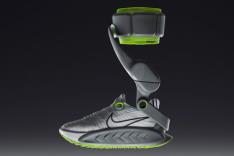Year-Round Workout #2: K Repeats
In the North Carolina High Country, where ZAP is located, we utilize kilometer repeats throughout the year. Depending on our emphasis, we use dirt roads, grass fields and even a local paved greenway in the city of Boone. These longer intervals, however, shift in their emphasis as the year progresses.
- Base phase/early training cycle effort: Early in your build-up, any kilometer repeats should be very moderate in nature with relatively short rest. Try 6 to 7 x 1K repeats with less than 1:00 recovery between each one. Early in your build-up these intervals should be run no faster than current anaerobic threshold effort, or roughly half marathon race pace.
- Fast forward 12 to 14 weeks in your training cycle: As your fitness improves and you get closer to your peak race period, make the intervals incrementally quicker every 4 to 6 weeks, and add a bit to the duration of the recovery as well.
- One of the common workouts we execute at ZAP within 6 to 8 weeks of targeted peak fitness is a session of 2 sets of 3 to 4 x 1K repeats (for a total of 7 kilometer) repeats with 2:15 to 2:30 recovery between each 1K, and 5:00 recovery between sets. These intervals should be run at or a hair slower than current 5K race pace. This session should not be implemented within 10 days of an important race.
Fartlek and kilometer repetitions are two of dozens of workouts a runner can implement in different ways throughout the year. As a general rule, early-season workouts should be more moderate in their nature, and later-season efforts more intense with additional recovery.
More: Reach Your Running Goal With Recovery Intervals
Periodization FAQs
There are subtleties to this theory worth discussing as well. Should you run anything quickly, such as race pace and faster, early on in a build-up? Or, should you just focus on getting in mileage? The short answer is you should never get too far removed from some sort of faster running, which turns over your legs quickly. One way to do this effectively during the base period is through long strides post-run or even light hill accelerations at the end of 1 to 2 runs per week.
More: Run Fast With Strides
Another common question: How much volume should you run late in training, as your peak races get closer? Be sure as you increase the intensity of your efforts that your volume comes down slightly, particularly as you begin to add racing to your regimen.
More: How to Peak at the Right Time
 Sign up for your next race.
Sign up for your next race.- 3
- of
- 3
About the Author

Get ACTIVE on the Go


Couch to 5K®
The best way to get new runners off the couch and across the finish line of their first 5K.
Available for iOS | Android







Discuss This Article